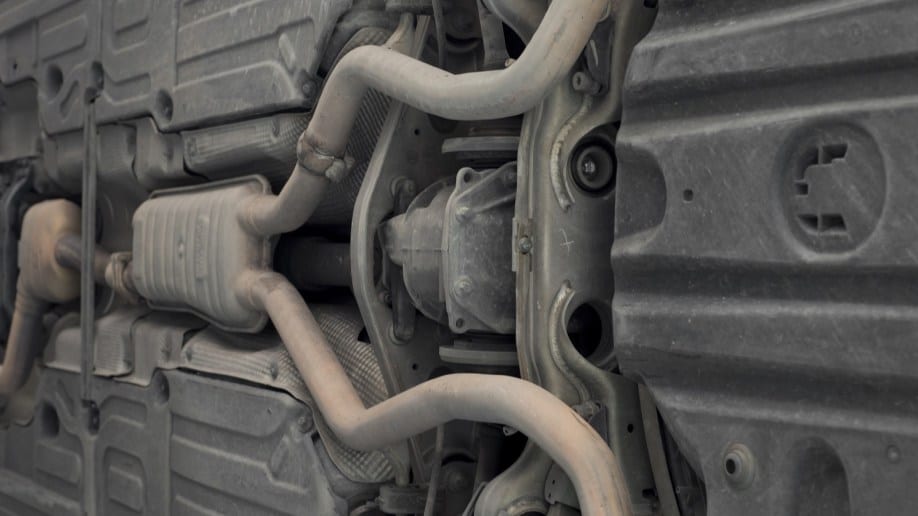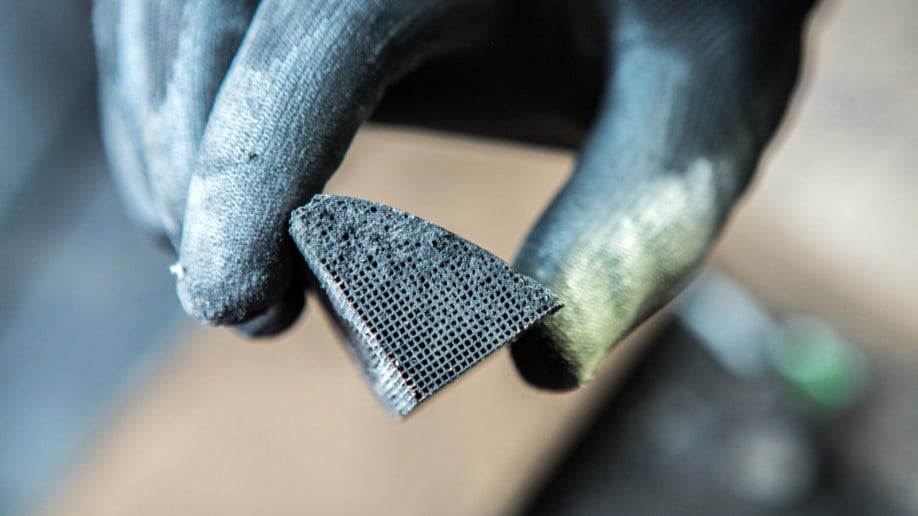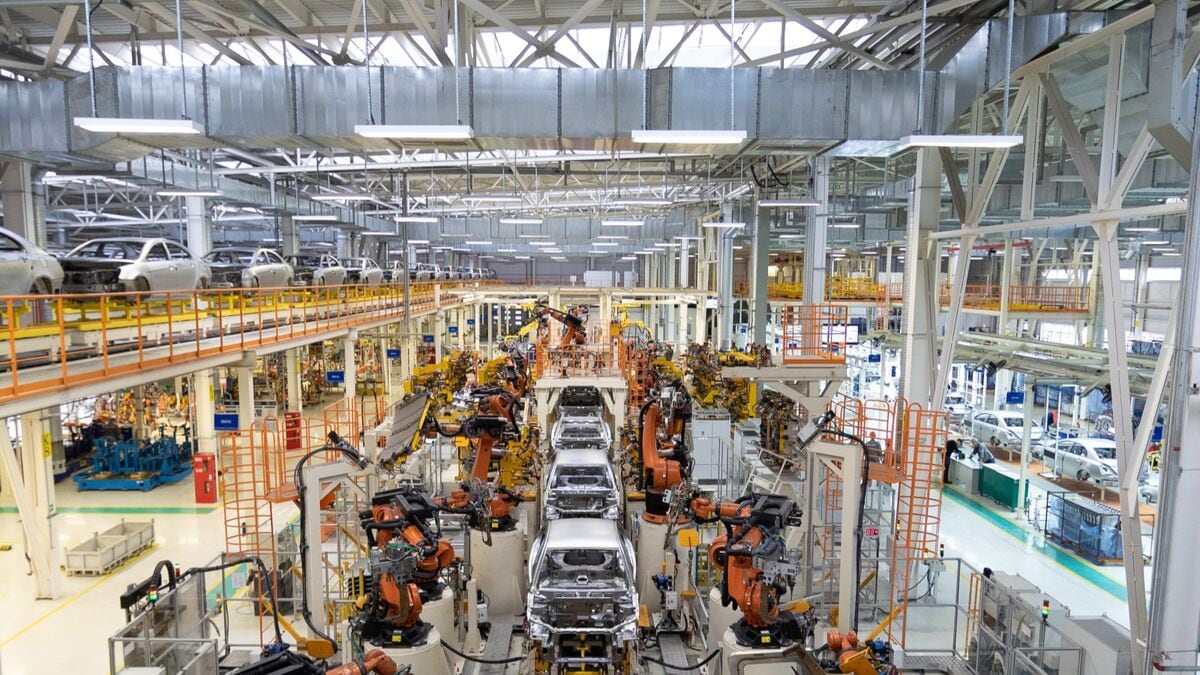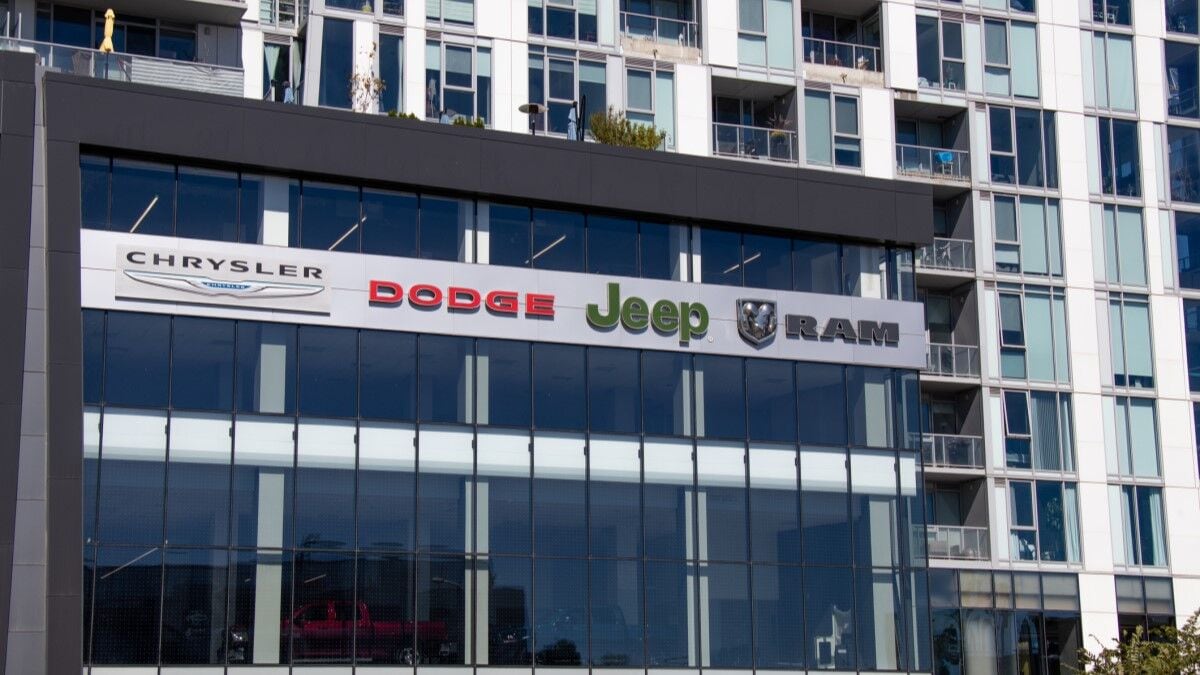
“Arrests, searches, and seizures took place in California, Oklahoma, Wyoming, Minnesota, New Jersey, New York, Nevada, North Carolina, and Virginia,” the department says.
Only time will tell whether the arrests slow a nationwide spree of catalytic converter theft.
Valuable Rare Metals in Easy Reach
A catalytic converter is an expensive, easily-removed part of every gas-powered car. The converter is part of your car’s exhaust system. It’s a steel can filled with a honeycomb of rare metals. Cars with 4-cylinder engines have converters about the size of a loaf of bread. Larger engines require larger converters.
Hot exhaust gases pass through the honeycomb of platinum, rhodium, palladium, and other elements. As they filter through, chemical reactions pull out harmful pollutants.
The price of those metals has spiked in recent years, making a catalytic converter worth thousands of dollars.
Criminals can easily steal them by sliding under the car and sawing them out.
A Recent Spike in Thefts
America’s car insurance companies report claims to an organization called the National Insurance Crime Bureau. The bureau reports almost a ten-fold increase in catalytic converter thefts since 2018.
Related: How to Protect Your Car from Catalytic Converter Thieves
The thefts have included large-scale operations. Car dealerships nationwide have invested in new security systems after several saw dozens of converters cut out of new trucks overnight. Several school systems have seen their bus fleets robbed of catalytic converters.
But thieves have also targeted individual cars nationwide. Criminals have proven particularly fond of large trucks and SUVs, which are higher off the ground and thus easier to slide under quickly. Some reports say hybrid cars are also targets, as their converters tend to stay in better shape for longer because their gasoline engines don’t run every time they drive.
A Mystery — Where Do Stolen Converters Go?
The Justice Department’s investigation helps answer a mystery that law enforcement agencies nationwide have been working to solve: How do thieves convert stolen catalytic converters into cash?
Federal indictments filed in the Eastern District of California and the Northern District of Oklahoma both allege that theft rings “bought stolen catalytic converters from local thieves and shipped them to DG Auto Parts LLC (DG Auto) in New Jersey for processing.”
DG Auto Parts allegedly “sold the precious metal powders it processed from California and elsewhere to a metal refinery for over $545 million.”
How to Protect Your Car
The Justice Department may have dealt a significant blow to the stolen catalytic converter trade. But it isn’t clear whether other operations are paying for stolen converters. It still makes sense to be vigilant.
Law enforcement experts recommend the following:
- Get your catalytic converter etched. Many police departments and some muffler shops will happily etch your license plate number onto your car’s catalytic converter for free. Thieves have a more challenging time selling a converter if police can tie it to a particular theft, making it almost worthless.
- Park indoors if possible. What thief would break into a garage when there are easier targets outside?
- Look for cameras. Choose parking garages and parking lots covered by cameras when you need to park the vehicle.
- Park in a well-lighted area. Thieves are less likely to steal from where there’s a higher chance of being seen.
- Consider installing a dash camera. Some dash cams use motion sensors and can record anyone close enough to your car to get to the catalytic converter. The presence of a camera can be enough to scare thieves off to find easier prey.
- Install an anti-theft device. Some car shops offer shields that make a catalytic converter harder to remove. We’re unaware of any studies on how well these devices work, but it seems logical that thieves might move on to cars without them.








